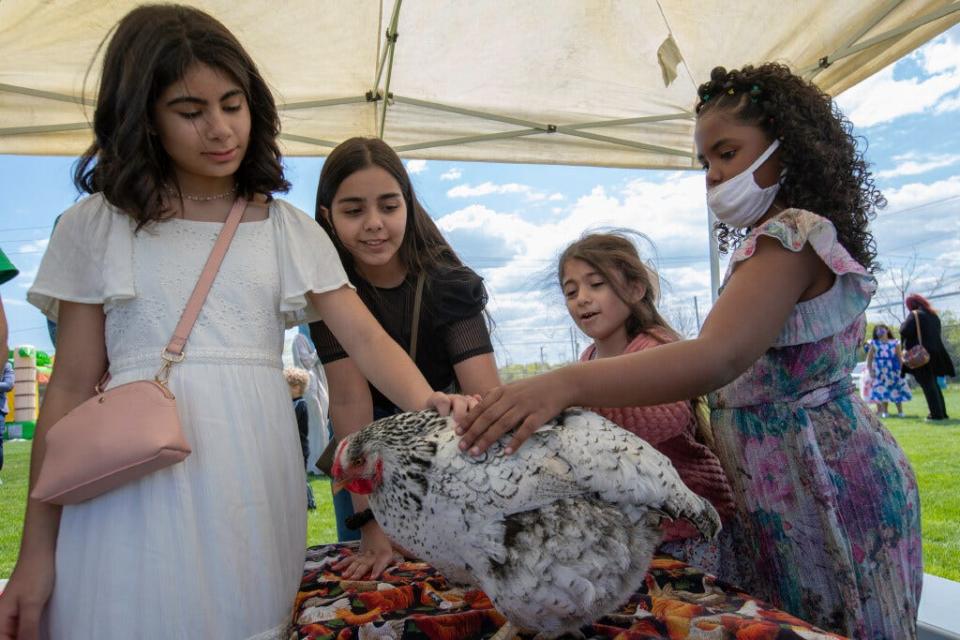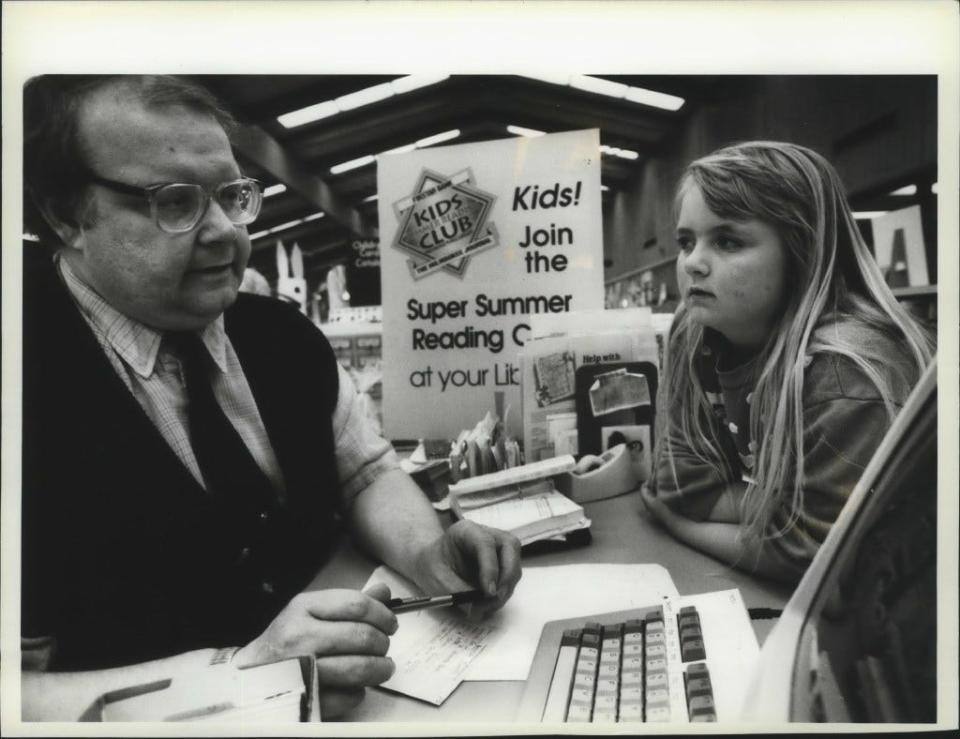Here's a guide to Milwaukee's Tippecanoe and Town of Lake neighborhoods
There are more than 75 distinct neighborhoods in Milwaukee.
Two of the city's southernmost are Tippecanoe and Town of Lake, located just beyond Bay View. The two neighborhoods were once part of the town of Lake, which was incorporated into the city of Milwaukee in 1954.
Today, Tippecanoe and Town of Lake are quite diverse. Though perhaps not as well known as Bay View, they're full of hidden gems to check out.
Here's what to know about the neighborhoods.
More: 5 things to know about the Avenues West neighborhood
More: Here's a guide to Milwaukee's lower east side neighborhood
More: How many neighborhoods are there in Milwaukee? Here's why there's no 'right' answer.

Where are Milwaukee's Tippecanoe and Town of Lake neighborhoods?
Neighborhood boundaries in Milwaukee are not completely set in stone and may differ depending who you ask.
According to "190 Milwaukee Neighborhoods," a project by Urban Anthropology, Inc., or UrbAn, these are the neighborhoods' boundaries:
Tippecanoe is bordered at the north and south by E. Morgan Ave. and E. Norwich Ave. It extends east to west from Lake Pkwy-794 to S. Howell Ave.
Town of Lake runs north to south from E. Norwich Ave. to Layton Ave. and east to west from Lake Pkwy-794 to S. 6th St.
The map below is based on UrbAn's boundaries. Some maps, such as those by the City of Milwaukee and the University of Wisconsin-Milwaukee, feature more complex southern and western borders for these neighborhoods.
Tippecanoe was once a neighborhood in the town of Lake, which was not part of Milwaukee
Until 1954, the Tippecanoe and Town of Lake neighborhoods were part of the town of Lake, an unincorporated town outside of the then-borders of Milwaukee. Lake's boundaries stretched from Lake Michigan to S. 27th Street and Greenfield Avenue to College Avenue.
Lake was established in 1838 by the Wisconsin Territorial Legislature. Back then and still today, towns rely on the state or county for services such as fire, police, garbage disposal and water, explained Jim Nelsen, social studies department chair at Golda Meir School.
Tippecanoe was one of multiple neighborhoods in the town of Lake. Others included Fernwood and St. Francis Heights. Tippecanoe, along with other far south-side neighborhoods, were established due to the influence of John Saveland, a 19th-century Norwegian immigrant and business owner.
"In 1887, Saveland organized a group of investors that purchased 30 acres of land bordered by today’s Bradley, Howard, Whitnall and Howell," UrbAn anthropologists write. "The group hoped to attract upper-middle class home buyers to their project — people who would work in the city and retire to their county estates at the end of the work day. But despite a convenient Milwaukee streetcar with stops along Howell Avenue, few lots were sold in the early days."
Instead, the land was settled by working class people, mostly Poles, in the early 1900s, following Saveland's death.
Milwaukee annexed the village of Bay View in 1887 and continued annexing much of the incorporated land to its south during the first half of the 20th century.
In 1951, citizens of the town of St. Francis incorporated into the City of St. Francis to avoid annexation after Milwaukee had been attempting to do so for decades.

By incorporating, St. Francis took with it the Wisconsin Electric Lakeside Power Plant. This was the "major property-tax payer in the town of Lake," Nelsen said, and one of the town's biggest employers.
"When St. Francis left and took the power plant with it, overnight, I want to say property taxes in Lake doubled or tripled, because they still had to cover all of their expenses," Nelsen said. "So, that means the individual property owners were suddenly paying way more in taxes."
Those who remained in Lake tried to remain independent and unincorporated, but with such high property taxes, they ultimately could not. In 1954, the citizens voted to be annexed by Milwaukee, and what remained of Lake, including the Tippecanoe neighborhood, became part of the city.
Tippecanoe and Town of Lake are active and diverse today
Today, the Town of Lake neighborhood, and Tippecanoe even more so, are largely residential and home to middle-class families. Tippecanoe has many affordable homes built in the 1940s and after, while Town of Lake has more architectural variety.
The neighborhoods offer family-friendly parks, including the Tippecanoe Park and playground, Emigh Playfield baseball and softball diamonds, Whittier Park and playground, and Mitchell Airport Park. Milwaukee Public Library's Tippecanoe branch, 3912 S. Howell Ave., features community and study spaces, green space, free WiFi and other resources.

Town of Lake is part of Milwaukee's "Garden District," which encompasses all neighborhoods in the 13th Aldermanic District. The Garden District is known for its long-time community garden, where gardeners can rent private plots to grow food and flowers; its farmers market and other family events organized by the Garden District Neighborhood Association.
Early on, Tippecanoe and the Town of Lake were largely settled by European farmers, with German and Polish immigrants making up the greatest percentages. The area became increasingly diverse in the 1970s and '80s as Latinos continued migrating south from Milwaukee's near south side, UrbAn writes.
According to UrbAn, the founding of the Islamic Center of Milwaukee in 1982 attracted Muslims from the Middle East and Northern Africa to the area. The Islamic Center is located just off of Layton Avenue, technically just outside the borders of Town of Lake, but attracts Muslim immigrants to the neighborhood. The center offers religious study and educational activities for all ages and operates the Salam School, a private, K4-12 school that educates students in core subjects, the Arabic language and Islamic studies.

Town of Lake's proximity to the General Mitchell International Airport and the neighborhood's Layton Avenue corridor ― which is lined with numerous hotels and fast food restaurants ― also attract immigrants to the area, who find employment at these businesses.
"Down Howell Avenue toward the airport, there are also a number of warehouses ... plus, the airport itself is a really huge employer," Nelsen said. "If you're new to the United States and you don't have a driver's license ... you're probably going to try to locate close to your employer, so people move where the jobs are."
In the 21st century, many newcomers have also been attracted to Tippecanoe for its proximity to the trendy Bay View neighborhood, which borders Tippecanoe to the north. Tippecanoe residents enjoy more affordable home prices and a quieter, more residential feel while still being close to Bay View's restaurants, shops and popular community activities, Nelsen said.
Hidden gems and things to do in Tippecanoe and Town of Lake
Constructed in 1938, the Town of Lake Water Tower and Municipal Building were built as one structure to save money during the Great Depression. The Art Deco-style building at 4001 S. 6th St. now houses Milwaukee's Department of Neighborhood Services and occasionally offers architectural tours.

Tippecanoe's early Polish roots are on display at Wioletta's Polish Market, 3955 S. Howell Ave., a small Polish grocery store owned by immigrant couple Adam and Wioletta Bartoszek. Customers can find traditional foods like sausages, pierogi, p?czki, cakes and sauerkraut, as well as clothing, décor items and traditional holiday decorations.
Layton Fruit Market, 1838 E. Layton Ave., offers fresh produce and a farmer's market feel all year long. The family business, with a more than 100-year history, also has a deli section, seafood, catering and gift baskets. Buddy's Meat Market, 3620 S. Clement Ave., is one of just a few dedicated butcher shops in the Milwaukee area today. The specialty market offers a variety of fresh meat cuts.
The Packing House restaurant, 900 E. Layton Ave., has been a family-owned favorite in Milwaukee since 1974. The spot has an in-restaurant menu and bar, but it's perhaps best known for its Friday evening drive-thru fish fry.
Hawthorne Coffee Roasters, 4177 S. Howell Ave., is an independent coffee shop with study spaces, free WiFi and baked goods. Established in 2021, Bad Moon Saloon, 4035 S. Clement Ave., is a biker-themed bar that hosts community events and live music. It also has a "backyard" for summer events.
New to the neighborhood? Here’s how to access Milwaukee services
Tippecanoe is in the 14th Aldermanic District and Town of Lake is in the 13th Aldermanic District. Contact your alderperson and find news about the 14th district at city.milwaukee.gov/CommonCouncil/CouncilMembers/District14 and the 13th district at city.milwaukee.gov/CommonCouncil/CouncilMembers/District13.
Tippecanoe and Town of Lake fall within Police District 6. Public, monthly Crime and Safety Meetings take place at rotating locations in the district. Visit city.milwaukee.gov/police/districts/District-6 for more information.
Find your garbage and recycling schedule at city.milwaukee.gov/sanitation/GarbageRecyclingSchedules.
Learn how to register to vote and find your polling place at city.milwaukee.gov/election/Voter-Info.
Need to borrow tools for a home improvement project? Check out the city’s Tool Loan Center, 2500 W. Capitol Drive. More details at bit.ly/MKE_ToolLoan.
Want to get emailed updates about police activity, new development and more in your neighborhood? Sign up for the city’s e-notify system at city.milwaukee.gov/News-Events/enotify.
Tell us about your Milwaukee neighborhood. We want to hear from you!
What makes your Milwaukee neighborhood special to you? Do you have any photos in the neighborhood you'd like to share? Share more at bit.ly/MKE_Neighborhoods.
This article originally appeared on Milwaukee Journal Sentinel: A guide to Milwaukee's Town of Lake and Tippecanoe neighborhoods
